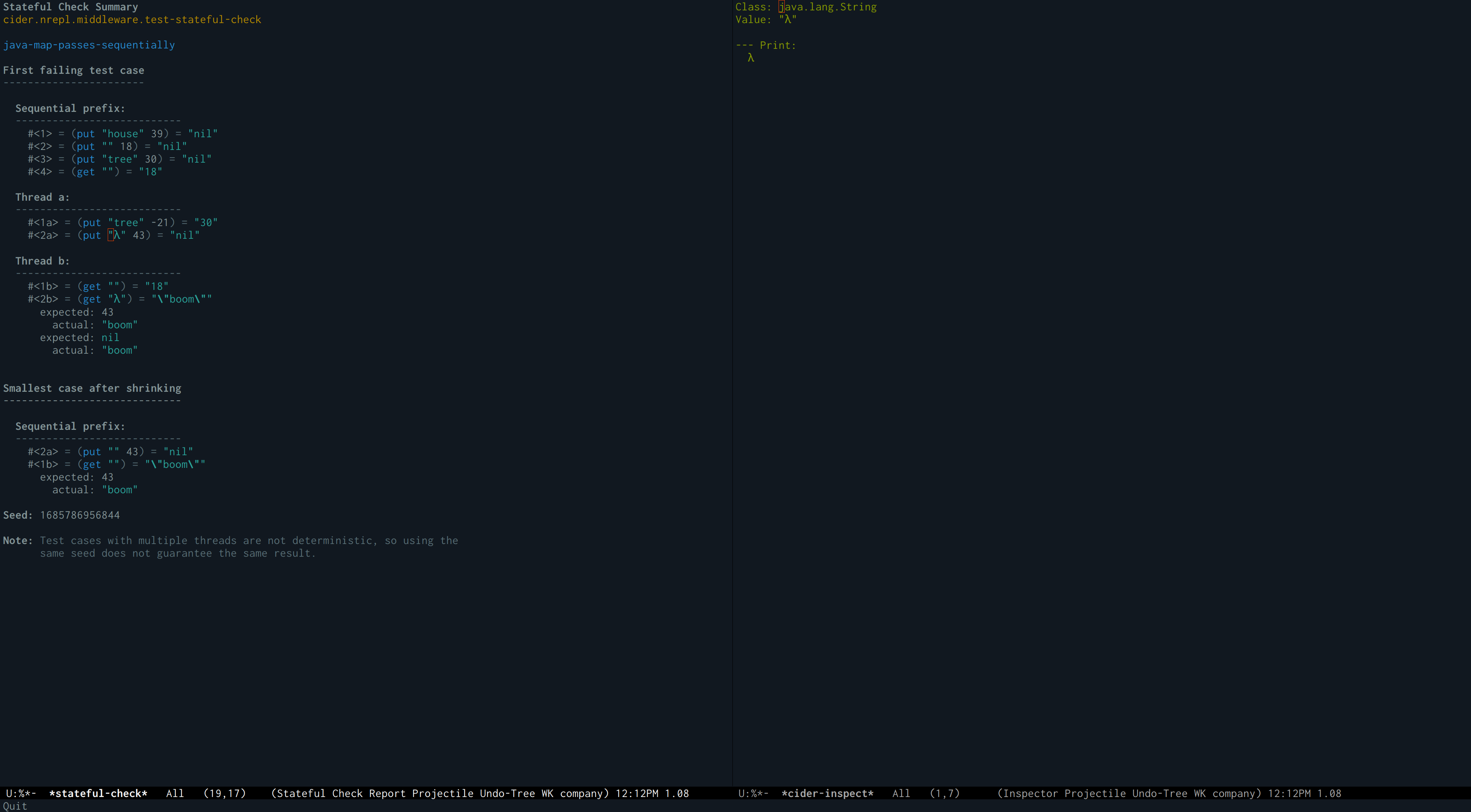Hi Roman, this sounds like a great idea!
Initial thoughts: having to maintain things over multiple repositories will be a bit of a pain. Having a single .el file in the stateful-check repo, and then patching the Clojure-side nrepl bits would be my preference. These must be optional, so that stateful-check continues to function without CIDER (particularly because keeping it up-to-date with CIDER changes might be pretty annoying, and we want things to remain minimally functional at all times).
I would focus on one thing at a time. I think a good place to start is to aim for "render the command trace Emacs-side, using CIDER to print objects". This will require (at least):
- changing
stateful-checkto expose command traces as proper objects - an Emacs Lisp mode to turn these objects into text in a buffer
- some way to invoke
stateful-checkthrough Emacs
I think this is solving the core pieces of the problem (i.e. moving data between both sides, and rendering it).
There are some parts to this that not obvious. For instance, your change in https://github.com/r0man/stateful-check/commit/ee44cc06070196256e5d4b3f549f71e1fdefe283 is tricky, because if a mutation is detected the object will be returned as a string (with a warning) rather than the object itself. If we want the command/trace objects to be inspectable in Emacs, we need to decide how this interacts with mutable objects in the test, and what that experience is for a user.


Hi @czan,
I'm experimenting with an Emacs Mode for stateful-check.
Right now I have the following features planned:
It's all work in progress, but this is where I am right now:
https://github.com/r0man/stateful-check/tree/nrepl https://github.com/r0man/cider/tree/stateful-check https://github.com/r0man/cider-nrepl/tree/stateful-check
Since you also seem to use know a bit about Emacs and NREPL middleware (I just discovered wingman), do you have any other ideas?
Roman